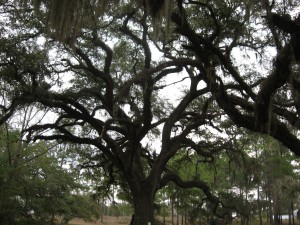THE SANGUINE ROOT VISITS Â GEORGIA
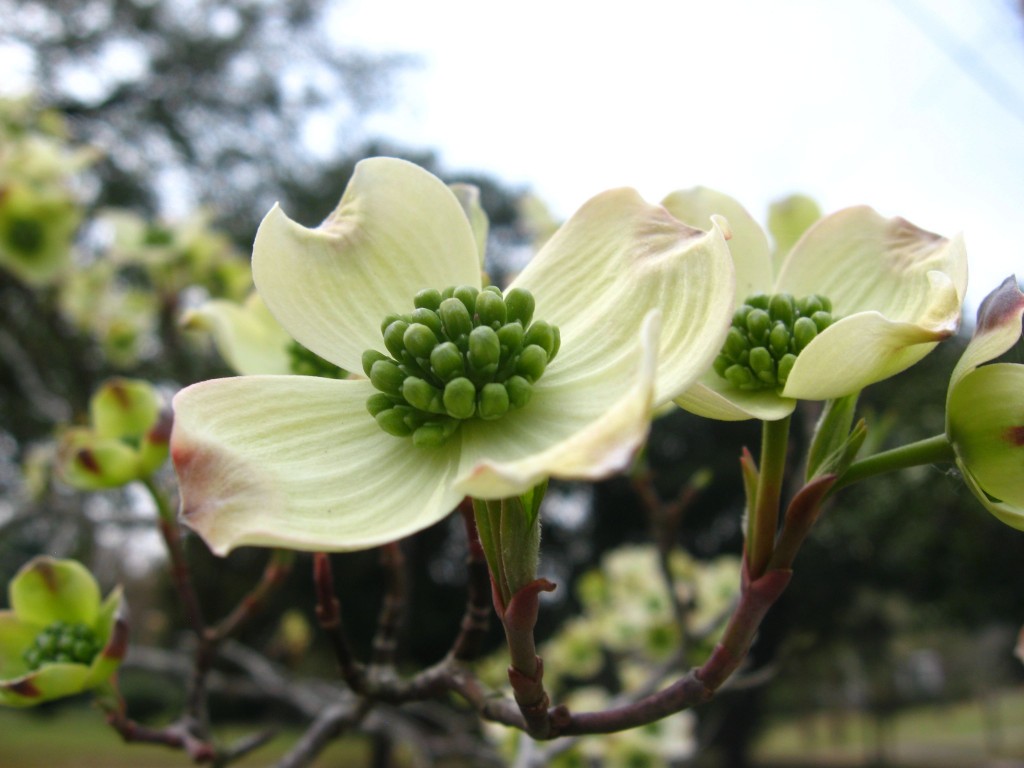
Driving south from Pennsylvania in the first week of March is a unique experience. As the miles pass, so does the sense of time and the acceleration of the much anticipated spring season.  All of a sudden, we started seeing blooming Red Maple trees, and as we traveled through South Carolina we started to see the blossoms of Redbud trees in the woods along the highway. The South Carolina Welcome Center had a blooming Daffodil. In the next few weeks here in Philly, we will be seeing plenty of  Daffodils, but it is the first one that we remember the most.
We crossed the Savannah River and entered the State of Georgia, where there was a welcome center that provided us a free map, which was much needed and got heavy use throughout our trip. The parking area had a landscaped picnic spot, however we were drawn to the back of the parking lot, where there was a wooded area that sloped down to the Savannah River.  From what we could tell, the contract for the landscapers ended about 10 feet from the edge of the  asphalt parking lot.  The rest was history.  A swath of untouched woods for many years, right there for us to explore. After a long morning in the car, clocking some heavy miles towards our southern destination of Thomasville Georgia, a half hour in these woods was a special treat.
We are now in Georgia!
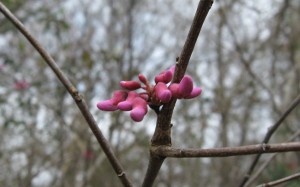
The woods between the Georgia welcome center and the Savannah River. We had to penetrate a thicket of the invasive exotics Lonicera japonica (Japanese honeysuckle)and Euonymus alatus (Burning bush) to find wild blooming Cercis canadensis, (Eastern Redbud), and a most unexpected surprise, the native Lonicera sempervirens, our Coral honeysuckle choking out an invasive exotic burning bush- a reversal of the usual scene of an invasive vine choking a native shrub or tree.
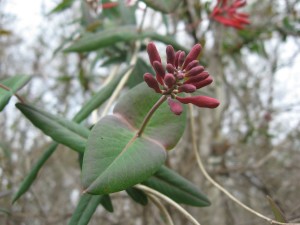
What a pleasant sight to behold. Â A flowering native honeysuckle growing in the wild right next to our rest stop. Note the fused leaves below the flower, a signature feature of this plant. All around was the invasive exotic Japanese honeysuckle, so to find this was exciting. Â Last fall, the Sanguine Root Environmental Restoration Team spent weeks in an area of Morris Park just like this, removing the exotic invasive honeysuckle and preserving the native one. They are very similar in appearance and were often twining up the same trees. Â We have become experts in the botanical differences between the two species and have learned to tell the difference on the spot, in an instant. We would love to share with you these details in the future.
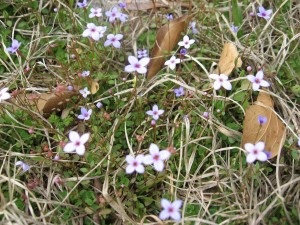
In a mowed area near the Parking lot we found a colony of Bluets. Â This low-growing native flower likes to grow among moss.
The most spectacular and exquisite features of the rest stop were off the beaten path and were not intended to be showcased. Â Our next destination before Thomasville was 3 hours away in the Oconee National Forest. Â We had no idea what to expect except that it was a green splotch on our new map, a bit southeast of Atlanta. Â The basic rule of thumb for our trip was to set a goal for the day’s travel, get up as early as the laws of physics will allow so that we can explore that green patch on the map in the mid-point of the day’s drive. Â A green splotch usually means a park of some sort, a nice place to stop, and a potentially memorable experience that can last a lifetime. Â We will never forget finding the Native Lonicera sempervirens and the bluets at the Georgia Welcome Center.
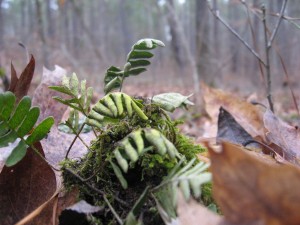
In this post we will do our best to cover some of Georgia’s  most beautiful woodlands and natural areas. To do it justice would require at least a shelf of reference books, a wealth of historical collections and some novels on top of that. All we had was our free Georgia map, some digital cameras, and an open mind . When we got to Thomasville, our knowledgable guide was able to show us old-growth forests and tell the story of their continual survival. By the time we crossed the Savannah River on our way out of Georgia to South Carolina, we had a pretty good idea of the Georgia woods. In our estimation, a pretty good idea means having more questions than answers at immediate hand. The more questions you have about something, the  more you know that thing.
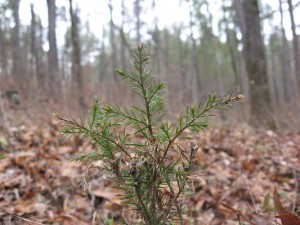
This little plant was about 8 inches tall. Â An Atlantic white cedar sapling? Anyone have a guess or authoritative answer?
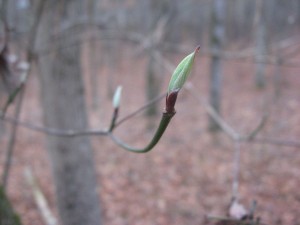
This one we know. Â Cornus florida, a Dogwood tree.
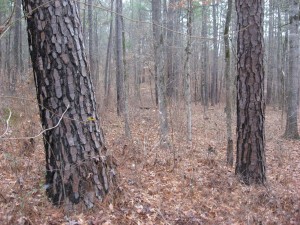
Here we first encountered evidence of fire. At one point the trees had burned in the area where their trunks meet the forest floor. Could it have been a natural fire or a man-made one?
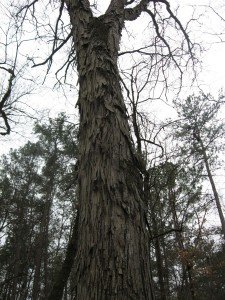
The unmistakable trunk of the Shagbark Hickory (Carya ovata).
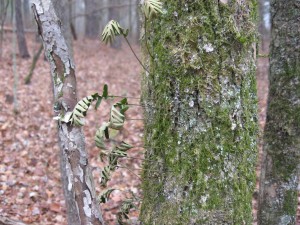
Our first ever sighting of the Resurrection fern (Polypodium polypodioides). This fern weathers drought conditions in this wilted state. When exposed to moisture, the fern perks right up and carries on about its business.
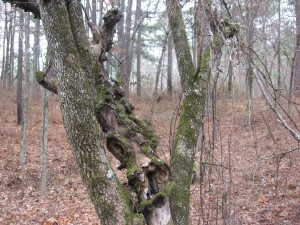
Cornus florida
A tale of two Dogwoods. Â Both about the same size and growth habit, but living in two different conditions. Â The one at the top is growing in the wild in the Oconee National Forest, and the one at bottom is a Thomasville Georgia Street tree, carefully doted over, pruned and blooming. Â The wild one has moss and Resurrection fern growing on it, along with many dead branches.
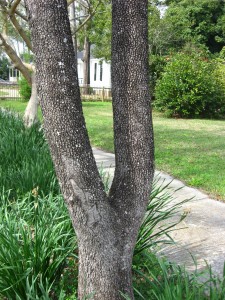
The young dogwood sapling grows in the wild near its decayed ancestors. Isabelle found this one.
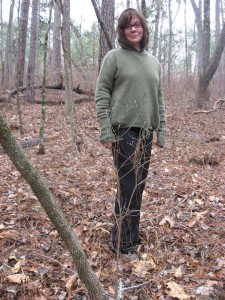
The Longleaf pines, the Shagbark hickory, Flowering dogwood and the Oaks we saw in this area all had something in common: they are trees that survive a forest fire, whether natural or prescribed. Â We noticed something about the bark in each of these trees; that it was thick and scaly, and had the outermost sections peeling a bit, with a noticeably increased surface area.
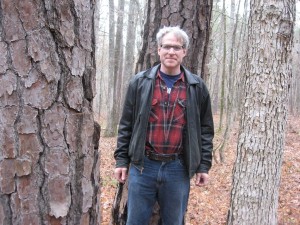
For a tree to weather forest fires would require a thick bark, to protect the living tissue from sustained damage. Â But the peeling bark, with increased surface area seems to invite fire, with more to burn available easily. This raised a lot of questions. Â Do these trees want to invite fire by creating dry, papery bark fragments so easily peeled off with one’s hands? That it is in their best interests to keep a forest fire alive by providing fuel for the fire?
Or perhaps in combination with keeping a fire alive is also the need to keep a fire moving right along, so that it does not linger and burn the trees down completely. Â Perhaps the papery bark insures the fire burns really hot, so quickly that it sucks the oxygen right out of the spot, so that the fire chokes itself out and is forced to move to another location, sparing the tree actual damage. Sort of like how quickly that rolled or crumpled up newspaper in the fireplace burns, but does not necessarily start the fire that burns all evening. Â These thoughts are all pure speculation as to how it all works- we have had no time to do any research on this subject.
It is fun to observe, ask lots of questions and let the answers roll in. Â Sometimes it is best to observe something on your own with little or no knowledge of the subject. This way you can have a unique perspective on the subject. Â This can prove useful in analyzing and problem solving; seeing the bigger picture of a realm and connecting the dots in a constantly evolving ecosytem, often under stress.
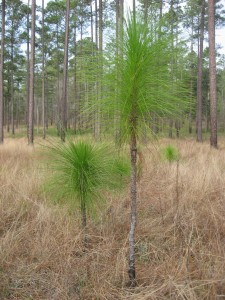
Pinus palustris
THE SANGUINE ROOT IS INTRODUCED TO THE LONGLEAF PINE
The longleaf pine is a fascinating American tree and it has captured our imaginations. The Longleaf pine (Pinus Palustris) tells the story of life in the forests of southern Georgia with precision and finesse.  In its infancy, this tree presents itself in a form that resembles a tuft of grass or forest sedge. A grass-like radiance of  green needles arcs out of the forest floor, a mere tuft of life emerging from an often burned landscape, the charred forest floor of a southern Georgia landscape.  In a natural unaltered setting, this image is most likely in a yearly regularity  that necessitates the one square foot of green space the Longleaf pine  sapling creates. The Longleaf pine is a species of tree that is completely dependent on and at the same time, resistant to and encouraging of  fire.  Fire is the life-giving component of this tree, as well as water.  Without fire and water, this species would become extirpated from the forest.  The tree finds this relationship pretty straightforward, given its conditions. It can live for tens of years on very little water, and plenty of fire.  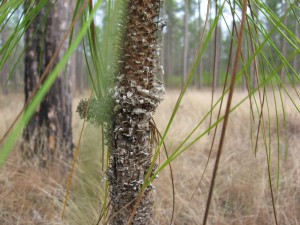
- Longleaf Pine- detail of the young trunk, near Thomasville Georgia
The detailed view of the trunk of the Longleaf Pine Sapling illustrates clearly its survival strategy in a drought and fire-prone environment: The intense surface area of this young trunk invites fire to rage. The fire burns hot and quick and some saplings will be consumed by this and a few will not. The fire will then move away from the location, after having burned as much as it can, in the conditions.  What remains is a few specimens of Longleaf pine, now without competition of other specimens of Longleaf pine or other species. The few remaining specimens of Longleaf Pine will now have the opportunity to quickly grow and utilize the resources of water and sunlight newly available, without competition. And quickly grow they do. That ‘ tuft of grass’ looking thing that was there for a few years has all this time been developing a taproot that reaches deep into the ground, to get a grasp on the moisture available  for survival. Still an innocuous ‘tuft’ the Longleaf pine waits for its moment. The drought and subsequent fires come. The fires burn everything exposed and some things are completely burned and some plants have been waiting for the fire for quite some time.  The Longleaf Pine Sapling ‘tuft of grass’ has been  there for years looking like nothing special, yet all this time digging deeper into the earth, tapping into the moisture source, growing its roots and waiting for the right moment to make its move…
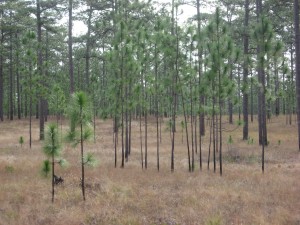
After the big hot fire, and the few weeks after, The Longleaf Pine ‘Sapling’, makes its move. The tree uses all of its resources, and all of its energy to grow as fast and as tall as absolutely possible. It has a very limited time to achieve a certain status, or risk death by burning at the next fire season.
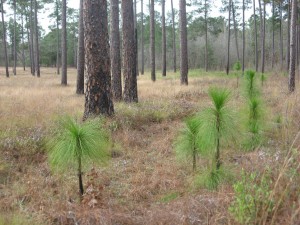
The picture above shows trees that are hundreds of years old next to mere whips, that are most likely a a few years older that you might think…
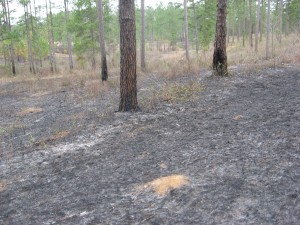
This is  still  a managed forest with prescribed  burns, so we expect a certain degree of  inauthenticity. However, The Longleaf pine persists. The area around Thomasville Georgia is unique and special in this manner and the Longleaf Pine in our best estimation, is being conserved and protected. This area is not a National Forest or State park or a Wildlife  Preserve as of yet, However, the longterm survival of this vast and rare ecosystem may become dependent on a status such as these mentioned in the future.
What has protected these unique and rare forests around Thomasville Georgia is purely economic. They have served as Quail and Deer hunting grounds for many years, and this status has protected thousands of acres of forest from development. Â The hunting grounds around Thomasville Georgia have become an industry and economic base. Â Uniquely, this economic necessity has resulted in land stewardship practices most in keeping with the thousands of years of evolution of this species.
- Live oak, near Thomasville Georgia
There is no trip to Georgia without a great welcome from the Live Oaks. Only  the Sanguine Root would bypass the Live oak in  favor of the Longleaf pine in covering Southern Georgia. That’s just who we are, and by the way, our coverage of Live Oaks and longleaf pine is only hours apart .  If any species feels neglected (or humans who are worried about a species), we are open and always ready to discuss the species. Please speak out.
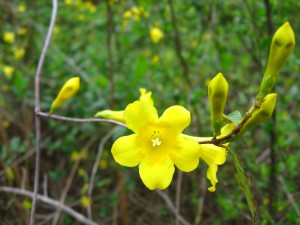
We are talking about the first week of March here, and let us just say y’all have it going on with Carolina Jasmine! This native vine has us immediately enamored.
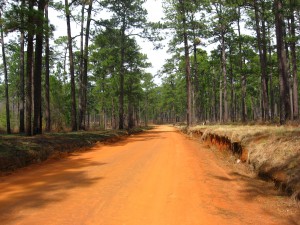
The age of these trees in comparison to the girth of their trunks is not what we are used to. These trees can spend many years in drought conditions and do not expand in their diameter the way a tree would in a mesic deciduous forest.
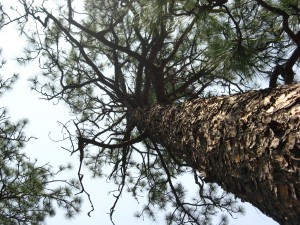
The color of the soil indicates an iron-rich content.
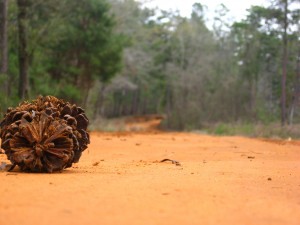
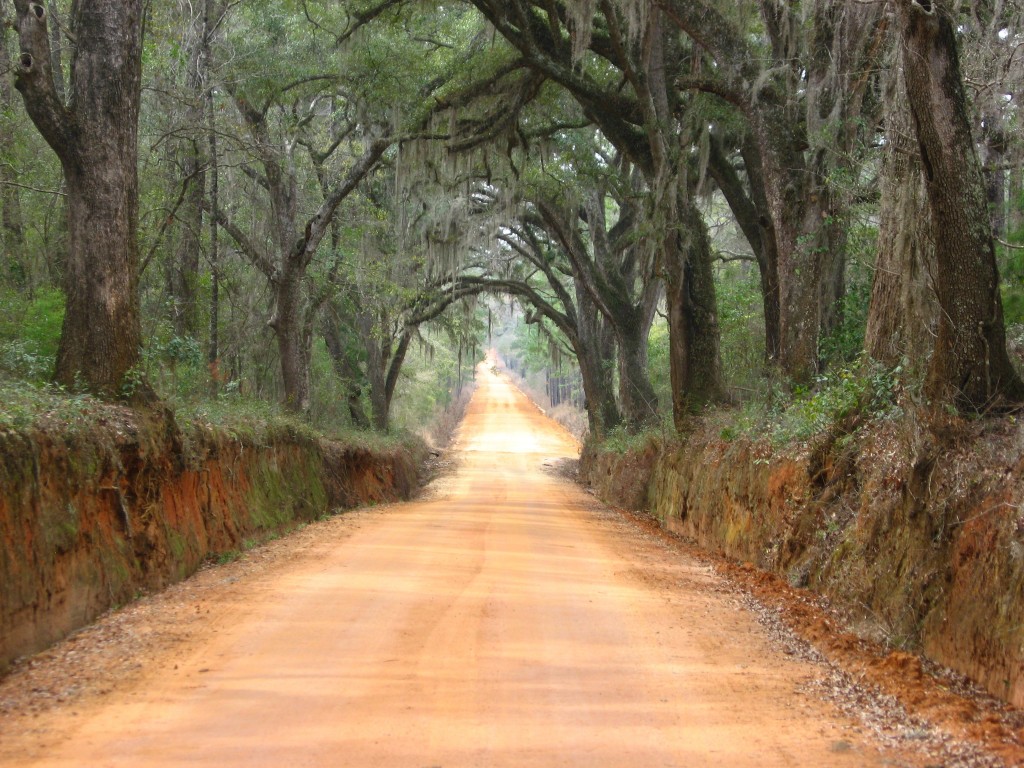
We were enchanted by the beauty of the country roads on the hunting plantations around Thomasville.
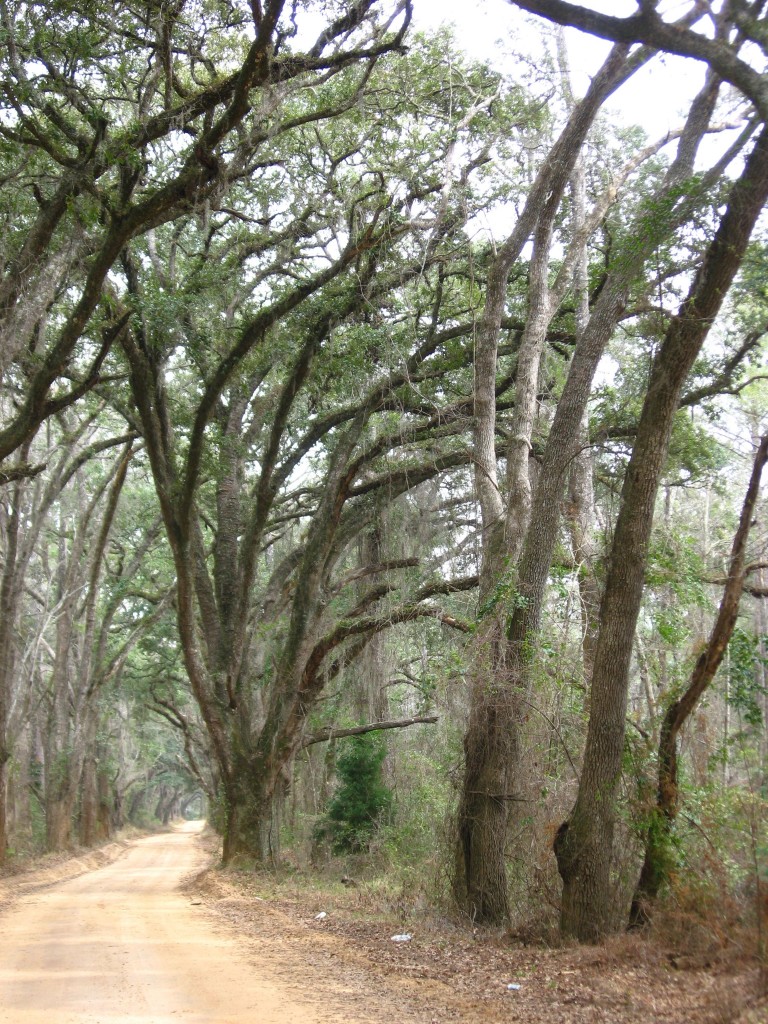
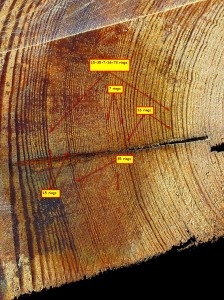
Here is some of the tree ring growth measurements in a cross section of a tree that was cut down in the early 1890s. Click on the image for further details.
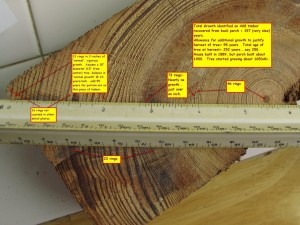
4-X-8-Pine-Timber-ring-count-detail
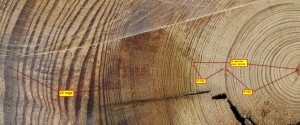
4-X-8-Pine-Timber-ring-count-detail
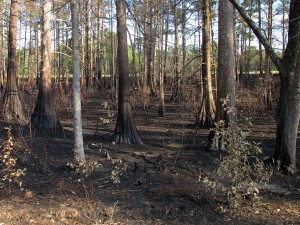
We wonder how a cypress swamp fares in a prescribed burn.
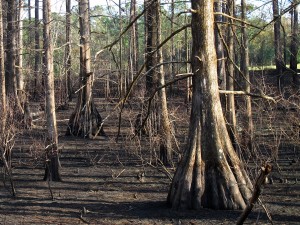
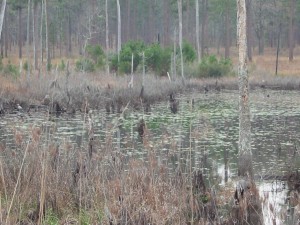
We saw a family of turtles on a log as we pulled up to this area.
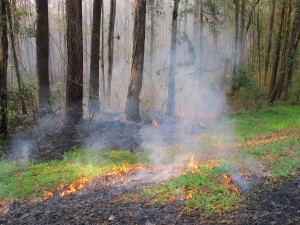
This fabulous photo of a prescribed burn did not come easy.  During our visit to southern Georgia, the Sanguine Root staff witnessed burns like this along the way, in the plantations around Thomasville. However we never thought that we needed to stop for a shot so that we could tell the full story. The fire was so small that we knew that we could get a better one down the road. Always on the lookout for a better fire, we never got a chance to take a picture of one. Mark Daniel kept his eye out for one after we departed and eventually found a good fire and created an image for The Sanguine Root. Thanks Mark.
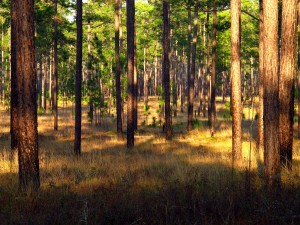
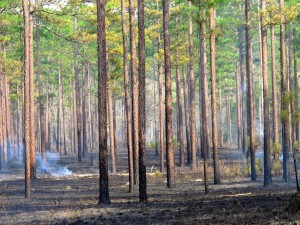
Georgia is a beautiful state and the Sanguine Root looks forward to returning. Thanks for the map!




